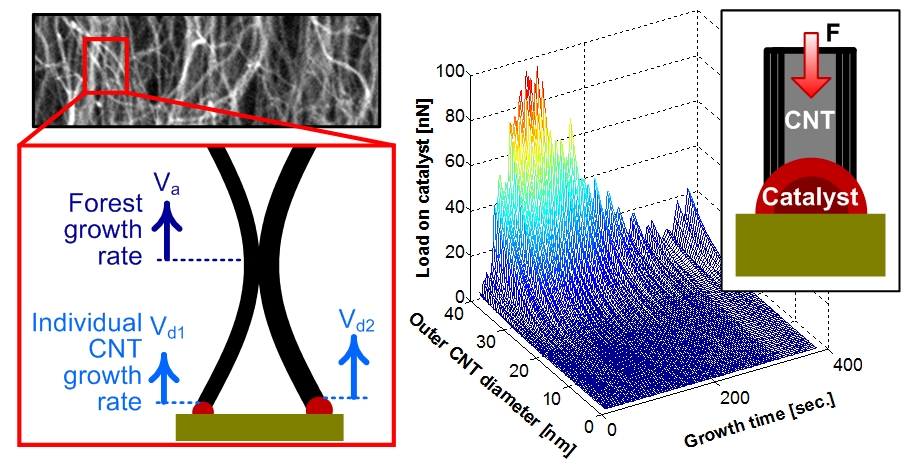
Year
2013Volume
5Pages
2928-2937Abstract
Aligned carbon nanotube (CNT) structures are promising for many applications; however, as-grown CNT “forests” synthesized by chemical vapor deposition (CVD) are typically low-density and mostly comprise tortuous defective CNTs. Here, we present evidence that the density and alignment of self-organized CNT growth is limited by mechanical coupling among CNTs in contact, in combination with their diameter-dependent growth rates. This study is enabled by comprehensive X-ray characterization of the spatially and temporally-varying internal morphology of CNT forests. Based on this data, we model the time evolution and diameter-dependent scaling of the ensuing mechanical forces on catalyst nanoparticles during CNT growth, which arise from the mismatch between the collective lengthening rate of the forest and the diameter-dependent growth rates of individual CNTs. In addition to enabling self-organization of CNTs into forests, time-varying forces between CNTs in contact dictate the hierarchical tortuous morphology of CNT forests, and may be sufficient to influence the structural quality of CNTs. These forces reach a maximum that is coincident with the maximum density observed in our growth process, and are proportional to CNT diameter. Therefore, we propose that improved manufacturing strategies for self-organized CNTs should consider both chemical and mechanical effects. This may be especially necessary to achieve high density CNT forests with low defect density, such as for improved thermal interfaces and high-permeability membranes.






